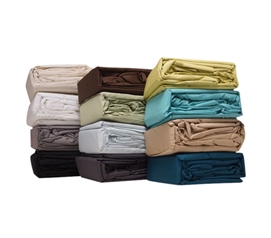
Some crystals are flat and are called tabular some are long and thin like needles or fibers and are described as either needlelike or fibrous still others are shaped like pyramids, prisms, cubes, and many other forms or combinations of forms. When good crystals are found, they are extremely valuable in identifying minerals. Perfect crystals generally are found where they project or grow slowly in open space, such as in fractures or veins. Unfortunately, large and visible crystals only form sporadically, mainly because growing crystals compete for space and crowd each other.

The crystal forms depend on the arrangement of the atoms and molecules of the mineral. Minerals always take on definite shapes, geometric forms, which may not be visible to the naked eye. Minerals that are neither opaque nor transparent, those through which light passes but through which no objects can be seen, are said to be translucent.

If no light passes through and nothing can be seen through a small piece, the mineral is called opaque. Transparency is when light passes through a small piece of a mineral so that objects can be seen through it. Hardness is another clue in identifying minerals, and in this book the hardness for each mineral is listed alongside its name. Therefore it has a hardness between 6 and 2.5. A sample such as calcite is too soft to scratch glass but is hard enough to scratch a fingernail. Minerals with a hardness of 6 or more will easily scratch a piece of glass. To test a mineral for hardness, try to scratch it with one of these common objects. Glass has a hardness of slightly less than 6 and will scratch most minerals. In the field, an easy way of estimating the hardness of a mineral is by trying to scratch it with common objects such as a fingernail with a hardness of 2.5, or a pocketknife blade, hardness 5.5. In this hardness scale, the softer minerals are assigned a low number and the harder minerals a higher number. To help identify minerals, geologists have assigned numbers to the hardness of several minerals. Diamonds are harder than quartz and will therefore scratch quartz, quartz will scratch calcite, calcite will scratch gypsum, and so on. The degree of hardness is an aid in identifying the minerals. Some minerals are very soft others very hard. Hematite, the common iron ore, invariably has a red-brown streak. This streak may have a different color from that of the mineral itself and is an excellent check in identifying many minerals. When a mineral is rubbed on a piece of unglazed porcelain, it leaves a streak of finely powdered material. Metallic, glassy, earthy, pearly, silky, and similar terms are used to describe luster. Luster concerns the character of the light that is reflected by the mineral. Impurities, however, often change the color of minerals. For example, gold is always yellow turquoise, always light blue. The following are terms commonly used to describe minerals.Ĭolor, the easiest physical property to describe, is one of the easiest means of identifying certain pure minerals. Describing a mineral without describing its physical properties is difficult. The definite physical properties of a mineral depend on its chemical composition and its molecular arrangement. Fool's gold, or pyrite, always consists of iron and sulfur together, forming iron sulfide, FeS 2, and sphalerite is always zinc sulfide, ZnS. Quartz, for instance, is always composed of the two elements silicon and oxygen which combine in the proportion of one atom of silicon to two of oxygen to form silicon dioxide, SiO 2. A characteristic chemical composition means that no matter where a mineral is found, it contains the same types and quantities of chemical elements. Inorganic means that the minerals have not been formed directly by any kind of life, either plant or animal. Natural means that it occurs in nature and is not manmade. What is a mineral? A mineral is a natural, inorganic substance with a characteristic chemical composition and definite physical properties. So was calcite, the mineral that is the primary component of limestone. Salt, a common mineral, was deposited at the bottom of an ancient sea. Because most of the rocks at the surface of Kansas are sedimentary in origin, so are most of the minerals. All rocks are composed of one or more minerals.


 0 kommentar(er)
0 kommentar(er)
